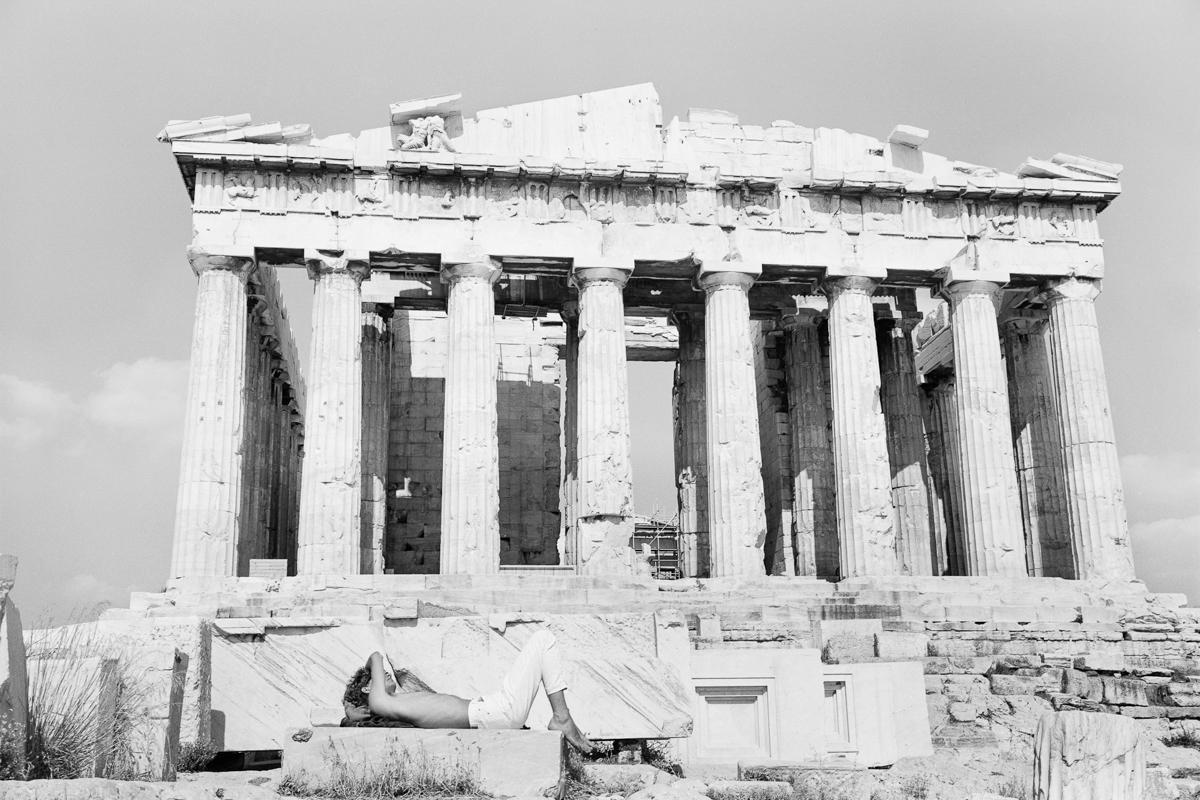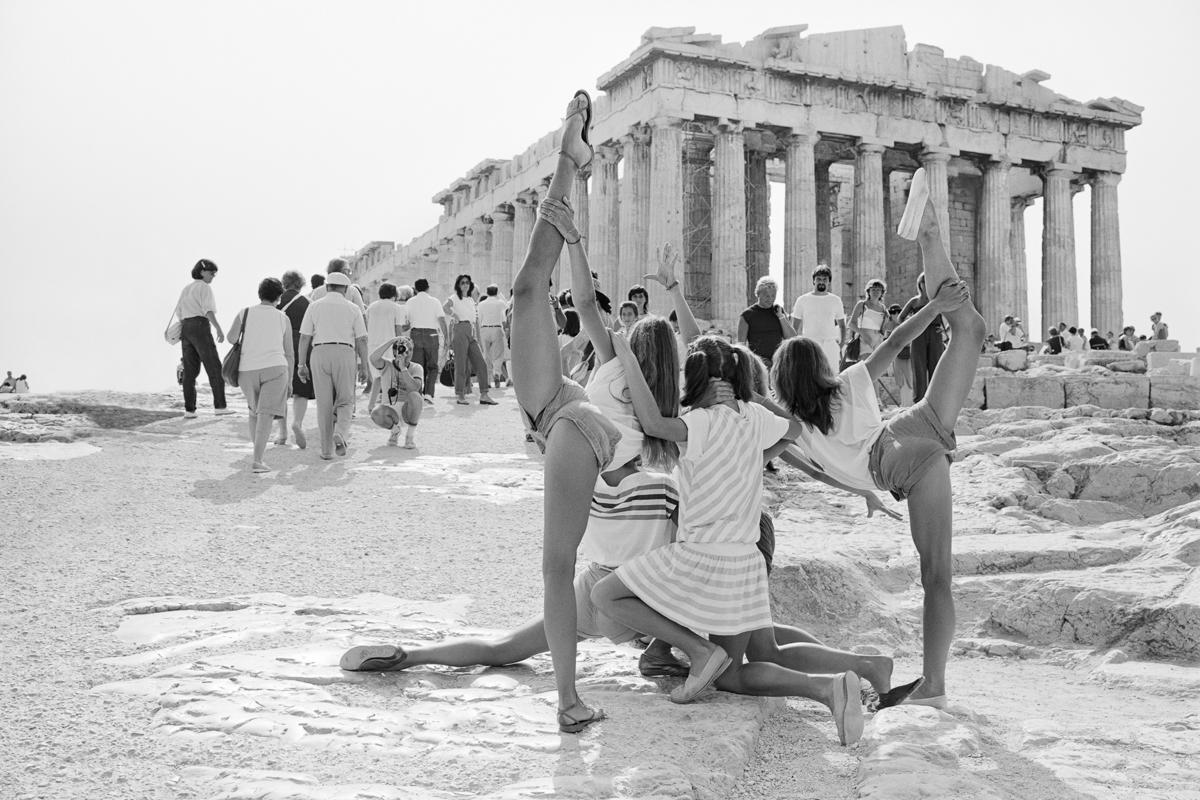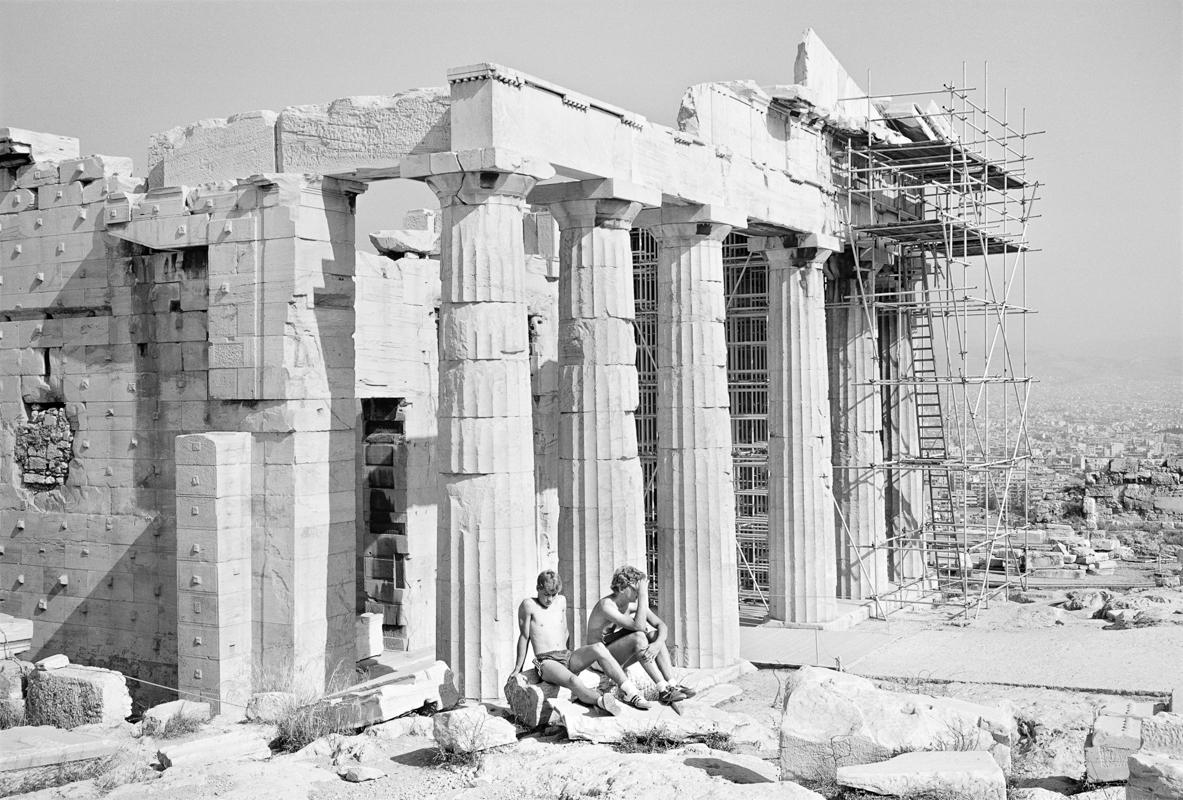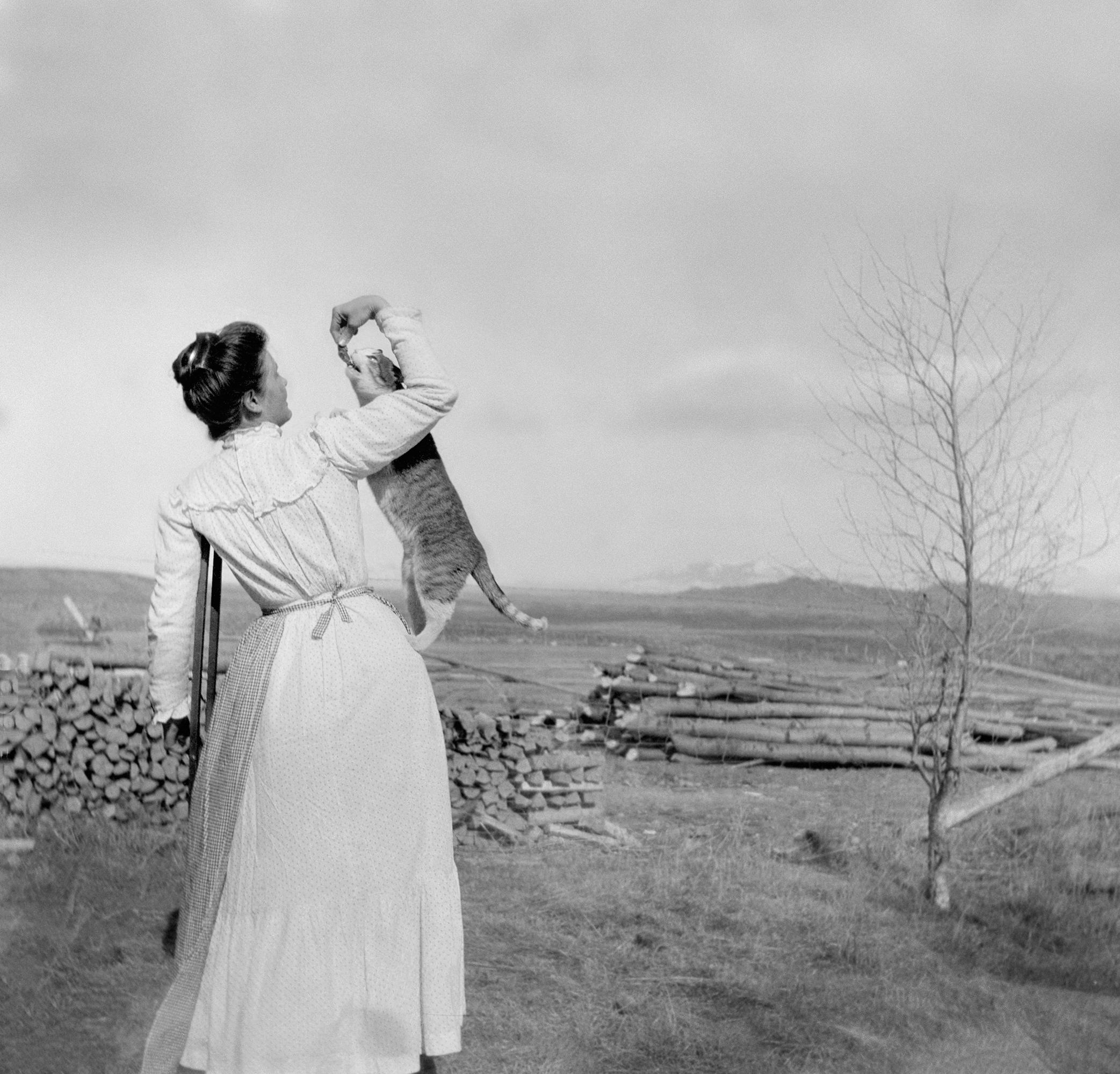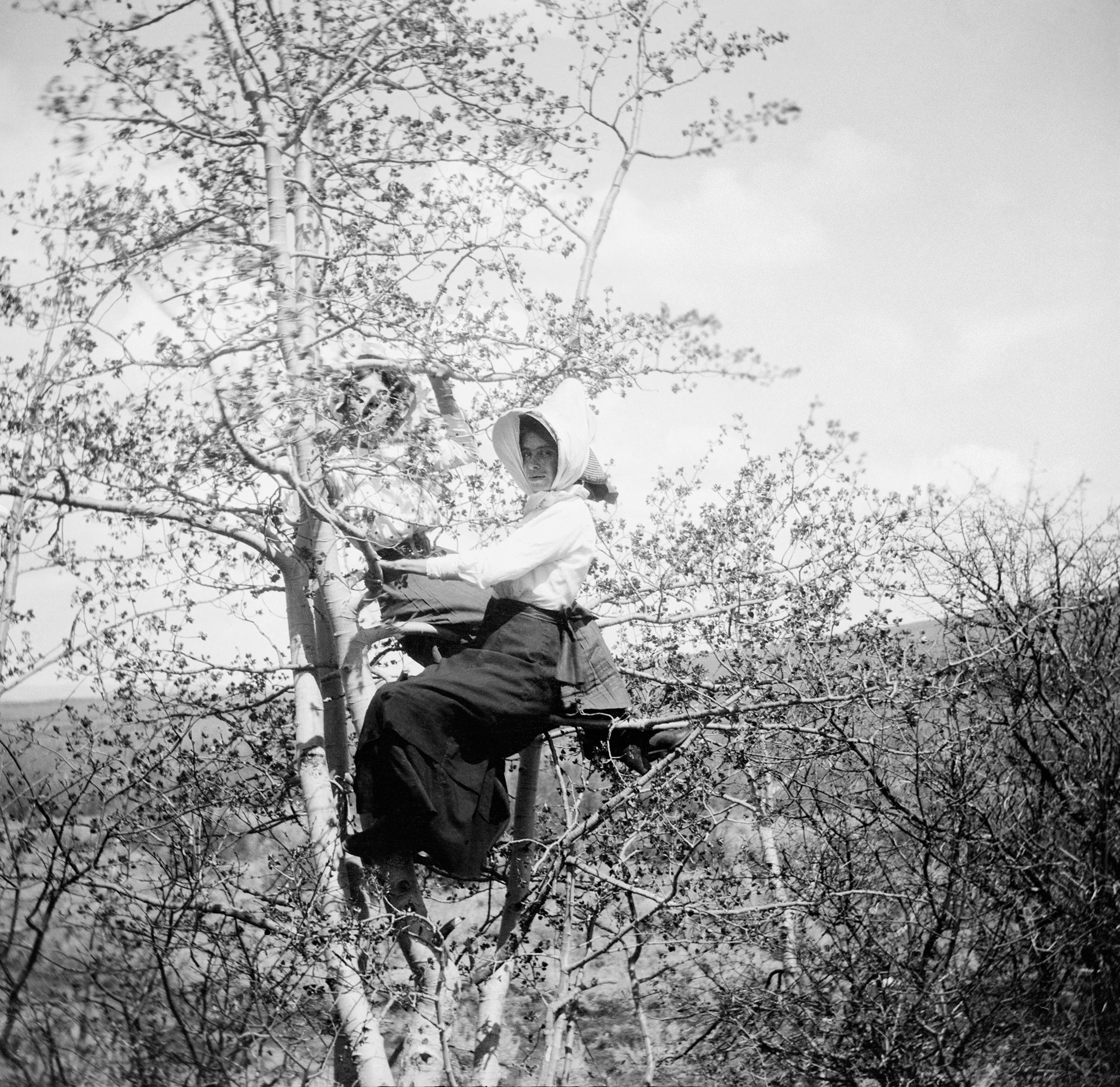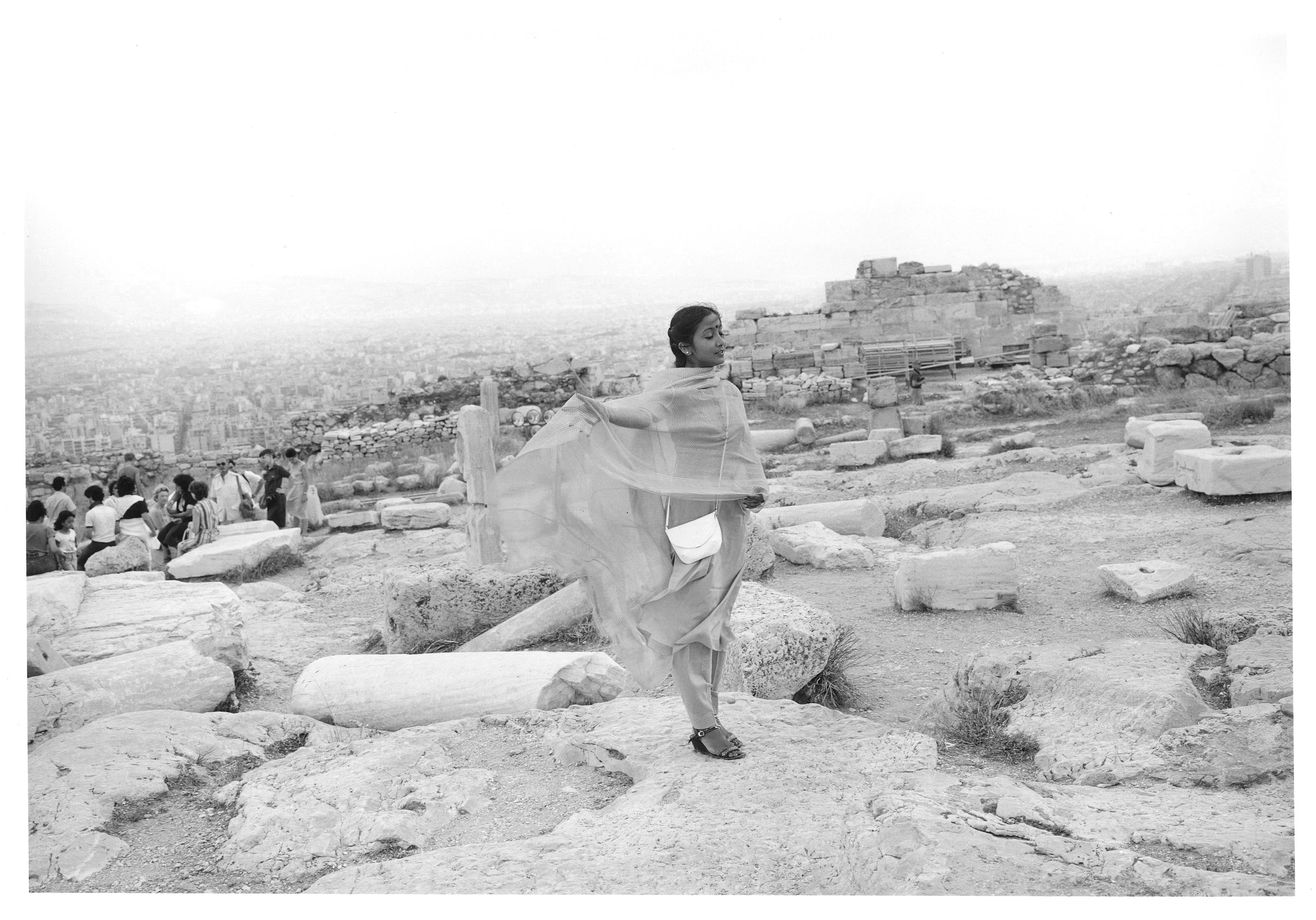Henri Cartier-BressonRoman Amphitheater, Valencia, Spain1933, printed later
1933, printed later
About the Item
- Creator:Henri Cartier-Bresson (1908 - 2004, French)
- Creation Year:1933, printed later
- Dimensions:Height: 9.5 in (24.13 cm)Width: 14 in (35.56 cm)
- Medium:
- Period:
- Condition:
- Gallery Location:New York, NY
- Reference Number:1stDibs: LU2644213451382
Henri Cartier-Bresson
The late photographer Henri Cartier-Bresson spent his long and varied career traveling the world and capturing images of everyone from children to cultural icons.
Beautiful but unsentimental street photography of children was one of the surprises offered by the sweeping survey “The World of Henri Cartier-Bresson,” at Peter Fetterman Gallery, in Santa Monica, California, in 2021. Some of the images are iconic, like Cartier-Bresson’s historic 1950s photographs for Life magazine of a newly Communist China and his portraits of cultural lions like Henri Matisse, Alberto Giacometti and Samuel Beckett. But nearly half the images, Fetterman said, were printed specifically at the gallery’s request and had not been widely exhibited or published.
One of the most striking discoveries was a 1954 image of five Russian girls standing in second position at a wrought-iron-and-wood ballet barre. The coolly elegant blond girl closest to the camera looks no more than 10 or 12 years old, but her calf muscles are as defined as those of an adult track star. “Rue Mouffetard, Paris,” from 1954, captures a boy grinning from ear to ear as he walks along a city street toward the lens — and presumably toward home — carrying with chin jutted out and visible pride a wine bottle under each arm. This picture, in which all elements conspire to highlight the boy’s swagger (notice the girls noticing the boy), is an illustration of capturing “the decisive moment,” which Cartier-Bresson famously defined and which modernists took as the ultimate goal of photography, although others later were more skeptical.
Born in 1908 in Chanteloup-en-Brie, France, the oldest of five children, Cartier-Bresson studied art and literature in school, refusing to join his father’s prosperous textile business. In 1931, he traveled to Africa to hunt wild game and found that he preferred a different kind of shoot: taking pictures with a small box camera.
On his return to France, Cartier-Bresson bought a Leica with a 50mm lens — the camera he called the “extension of my eye” and used for decades. He soon began working as a photojournalist, traveling the globe to capture everyday moments as well as some of the defining political events of the 20th century, from Gandhi’s funeral in 1948 and the fall of the Kuomintang in China in 1949 to the student uprising in Paris in 1968.
Cartier-Bresson was himself caught up in conflict. A French army officer during World War II, he was detained as a prisoner of war by the Nazis, prompting rumors he’d been killed. His photography was taken seriously enough at this time that the Museum of Modern Art in New York began preparing what it believed would be a posthumous retrospective of his work. The show took place in 1947, when the photographer was abundantly alive and well, and busy cofounding the great photo agency Magnum. MoMA has been a guardian and champion of his work ever since.
Find original Henri Cartier-Bresson black-and-white photography on 1stDibs.
- ShippingRetrieving quote...Ships From: Palm Beach, FL
- Return PolicyA return for this item may be initiated within 2 days of delivery.
- BubblyBy Ellen von UnwerthLocated in New York, NYEd. 2/3, signed, titled, dated, numbered in ink. Includes black frame. Ellen von Unwerth is a director and photographer who started out working as a fashion model. She was born in Frankfurt, Germany, and began modeling at the age of 20. After being noticed by a photographer on the street, she moved to Paris to begin a career as a fashion model. During her years as a model, she started to feel that the industry was missing an element of freedom. After receiving a camera as a gift from her boyfriend, she began to take her own pictures, which eventually led to an improvised photo-shoot in Africa of her model colleagues. Von Unwerth developed a passion for photography after seeing the published photos of her colleagues. She became famous for her work when she was hired by Guess to shoot an up-and-coming model named Claudia Shchiffer. This photo-shoot created a huge demand for her services in the industry. Since then, von Unwerth has gone on to photograph numerous celebrities and entertainers and has worked for leading magazines like Vogue, Interview, Vanity Fair, The Face, L’Uomo Vogue...Category
1990s Black and White Photography
MaterialsSilver Gelatin
- Squeeze Me, Los Angeles, CALocated in New York, NYEd. of 3, includes black frame with white mat. Vincent Ricardel is a photographic artist whose career has spanned the editorial, commercial and fine...Category
1990s Black and White Photography
MaterialsSilver Gelatin
- Wookie HeadBy Christophe von HohenbergLocated in New York, NYEd. 2/25, includes white frame. A Long Island native, von Hohenberg has always been a world traveler and took an interest in photography at the young age of fourteen. He was raised ...Category
1980s Black and White Photography
MaterialsSilver Gelatin
- New York City from Women are BeautifulBy Garry WinograndLocated in New York, NYAP from an Ed. of 20, includes black frame. Garry Winogrand is widely considered to be one of the most renowned street photographers of the 20th century, known, in particular, for h...Category
1970s Black and White Photography
MaterialsSilver Gelatin
- Park AvenueBy Garry WinograndLocated in New York, NYSigned in pencil on verso, includes thick decorative black frame with white mat. Garry Winogrand is widely considered to be one of the most renowned street photographers of the 20t...Category
1950s Black and White Photography
MaterialsSilver Gelatin
- LunaBy Christophe von HohenbergLocated in New York, NYEd. 10/10, includes black frame with white mat. This is the final edition available in this size. A Long Island native, von Hohenberg has always been a world traveler and took an in...Category
2010s Black and White Photography
MaterialsSilver Gelatin
- Untitled from "On The Acropolis"Located in New York, NYListing includes free shipping in the US and a 14-day return policy. All prints are made to order and will arrive in mint condition directly from Tod Papageorge...Category
1980s Black and White Photography
MaterialsPhotographic Paper, Silver Gelatin
- Untitled from "On The Acropolis"Located in New York, NYListing includes free shipping for an unframed print in the US and a 14-day return policy. All prints are made to order and will arrive in mint condition directly from Tod Papageorge...Category
1980s Black and White Photography
MaterialsSilver Gelatin
- Untitled from "On The Acropolis"Located in New York, NYListing includes free shipping in the US and a 14-day return policy. All prints are made to order and will arrive in mint condition directly from Tod Papageorge...Category
1980s Black and White Photography
MaterialsPhotographic Paper, Silver Gelatin
- Lizzie Nichols and Perkins, 1913Located in New York, NYListing includes framing with UV plexiglas, free shipping and a 14 day return policy. Lizzie Nichols and Perkins, 1913 15 x 15 inch gelatin silver print Image Size: 10.75 x 11 inches Frame size: 18 x 18 x 2 inches Edition of 15 Lora Webb Nichols was born in 1883 and grew up in the small mining town of Encampment, Wyoming. At the age of 16 Lora received her first camera and from that moment and for the next few decades she produced work that is both stunning in its singular voice and revealing in the world it opens up for us. At first Nichols photographed her family, friends, and the landscape around Encampment, but when the town experienced a copper mining boom Nichols expanded her scope to become a photographer for hire shooting portraits and industrial photographs. When the boom collapsed, Nichols took the risk of opening her own business in Encampment - The Rocky Mountain Studio - which opened in 1925. The studio ran for ten years, accumulating 24,000 negatives that illustrate the lives and environment of the people living in and around the town while creating a distinctive and surprising body of work. If one was to attempt an analogy – Nichols’ pictures fit somewhere between Lartigue and Lange - joyful and generous while objectively intimate. In particular what seems to distinguish Nichols’ work is the way she sees the world from a female perspective. As Vince Aletti...Category
1910s Other Art Style Black and White Photography
MaterialsSilver Gelatin
- Mary and Maude Platt, 1912Located in New York, NYListing includes framing with UV plexiglas, free shipping and a 14 day return policy. Lora Webb Nichols Mary and Maude Platt, 1912 15 x 15 inch gelatin silver print Image Size: 10.75 x 11 inches frame size 18 x 18 x 2 inches Edition of 15 Lora Webb Nichols was born in 1883 and grew up in the small mining town of Encampment, Wyoming. At the age of 16 Lora received her first camera and from that moment and for the next few decades she produced work that is both stunning in its singular voice and revealing in the world it opens up for us. At first Nichols photographed her family, friends, and the landscape around Encampment, but when the town experienced a copper mining boom Nichols expanded her scope to become a photographer for hire shooting portraits and industrial photographs. When the boom collapsed, Nichols took the risk of opening her own business in Encampment - The Rocky Mountain Studio - which opened in 1925. The studio ran for ten years, accumulating 24,000 negatives that illustrate the lives and environment of the people living in and around the town while creating a distinctive and surprising body of work. If one was to attempt an analogy – Nichols’ pictures fit somewhere between Lartigue and Lange - joyful and generous while objectively intimate. In particular what seems to distinguish Nichols’ work is the way she sees the world from a female perspective. As Vince Aletti...Category
1910s Other Art Style Black and White Photography
MaterialsSilver Gelatin
- Untitled from "On The Acropolis"Located in New York, NYListing includes free shipping in the US and a 14-day return policy. All prints are made to order and will arrive in mint condition directly from Tod Papageorge's New York Printer. Tod Papageorge Untitled from "On The Acropolis" 1983 - 1984. Printed in 2021 20 x 24 inch archival pigment print Edition of 9, Signed. Artist Biography - One of the most notable photographers of our time, Papageorge is known for both the originality and quality of his work as well as his influence on the generation of students he mentored while the Director of the Yale MFA...Category
1980s Black and White Photography
MaterialsPhotographic Paper, Silver Gelatin
